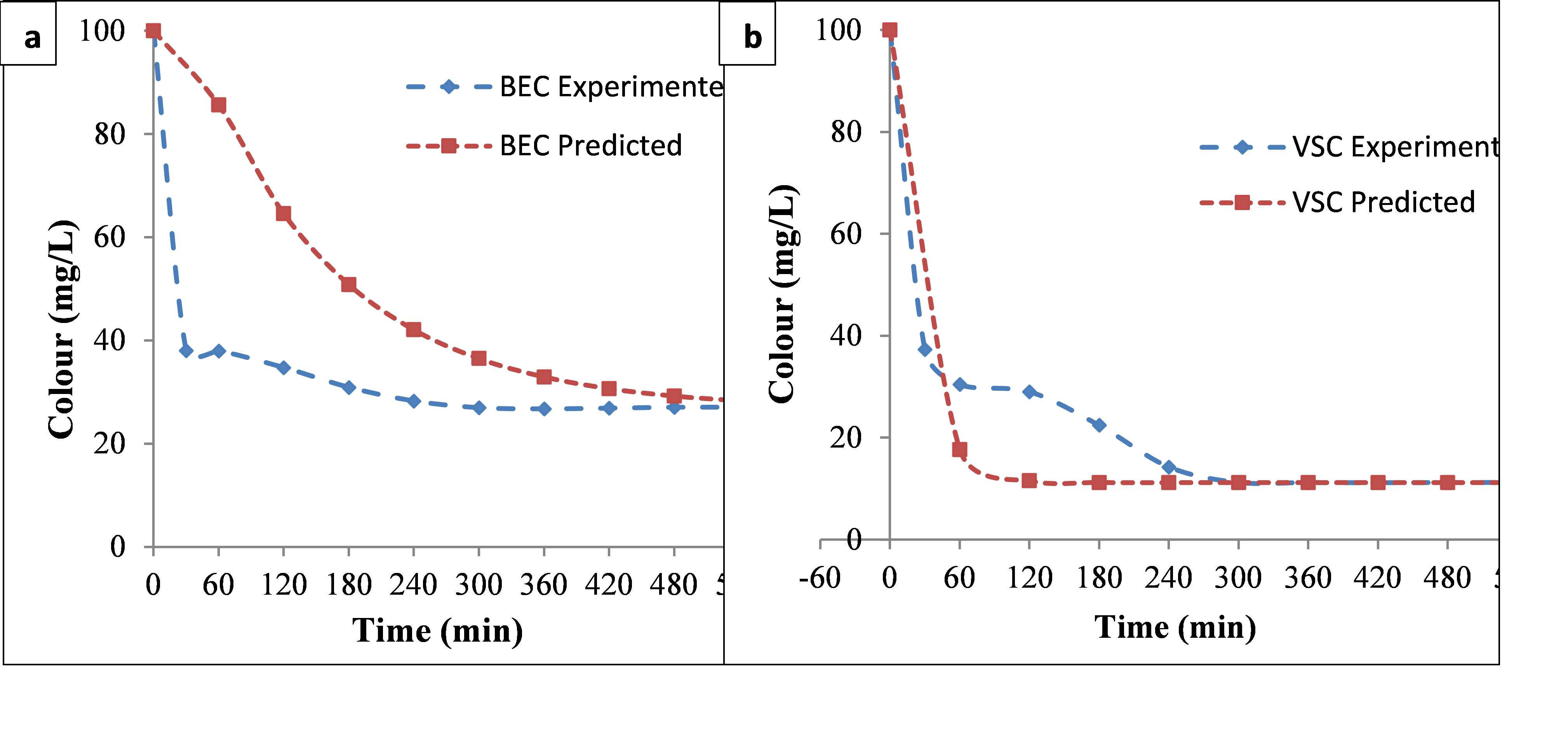Determination of performances of natural organic polymers for colour removal from simulated wastewater: Coagulation-adsorption kinetics and mathematical modelling approach
Keywords:
Coagulation-flocculation; Biebrich Scarlet (AR 66); natural organic polymers; coagulation-adsorption kinetics; particle transfer.Abstract
In this study, coagulation-flocculation efficiencies of Natural organic polymers (NOPs) were evaluated for the decolourisation of anionic synthetic dye in wastewater. The proximate composition, structure, and surface morphology of the Brachystegia eurycoma coagulant (BEC) and Vigna subterranean coagulant (VSC) were analysed using standard official methods, Fourier-Transform Infrared (FTIR) spectroscopy, and scanning electron microscopy (SEM), respectively. The order of removal efficiency was VSC > BEC with an optimum of 97.7% and 82.0% respectively, at pH 2, 200 mgBECL-1 and 200 mgVSCL-1 coagulant dosage, 100 mgL−1 dye concentration, 480 min, and 303 K. The values of K and α obtained for BEC and VSC were 1.65 E-02 Lmg-1min-1, 1.2 and 1.76 E-04 L/mg-1min-1, 2.2 respectively. The coagulation time (Tag) of 22.42 min and 27.92 min for BEC and VSC respectively as deduced from the plot showed a rapid coagulation process. The kinetics of coagulation-flocculation demonstrate that the process conforms with a pseudo-second order model with correlation coefficient R2 > 0.990, suggesting that chemisorption is the rate-controlling phase. It also reveals that particle adsorption on polymer surfaces occurs mostly as a monomolecular layer. The experimental data was well predicted by the cross-validation test, with mean relative deviation modulus (M%) of 0.223% and 1.829% for BEC and VSC, respectively. In conclusion, the coagulants studied added meaningful progress in wastewater treatment via coagulation-flocculation while showing significant adsorption features. Additionally, the application of kinetics and modelling in separation processes involving particle transfer should be considered a prerequisite in water treatment processes.


